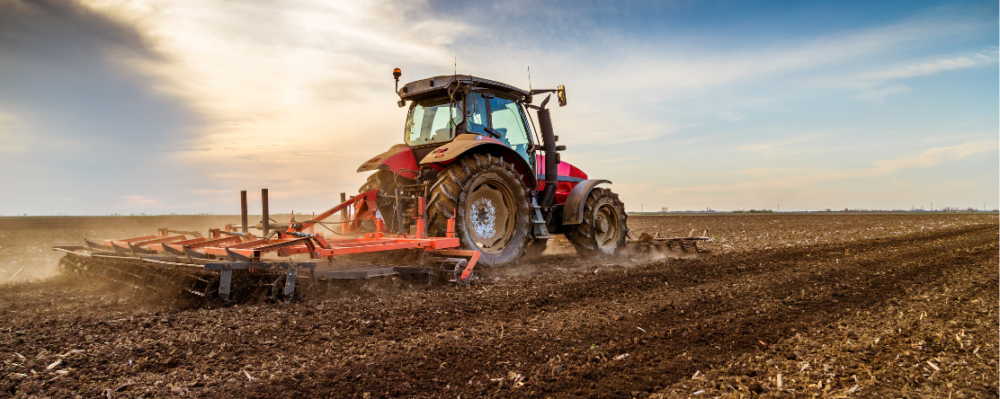
How Advocates Can More Effectively Counter Industry Efforts to Block Sugary Drink Taxes
- Heather Gehlert
-
Focus Areas
Chronic Disease Prevention -
Expertise
Media Advocacy & Communications, Public Policy Advocacy -
Programs
Berkeley Media Studies Group

In 2012, voters in two California cities went to the ballot box to consider taxing soda and other sugary drinks to improve community health. The measures failed, but advocates learned lessons that would help them pass future taxes in other cities like Berkeley, San Francisco, and Philadelphia. Public and policymaker support for such taxes has grown considerably since then; however, the beverage industry remains a formidable opponent and, for every success story, public health advocates have another tale of struggle or defeat.
For example, after Seattle approved a sugary drinks tax in 2017 and implemented it the following year, voters passed a ballot initiative to prohibit Washington state from imposing new taxes or fees on any grocery item. And last summer, amid the pandemic, Washington, D.C. Councilmember Brianne K. Nadeau withdrew legislation that would have leveraged a sugary drinks tax to decrease health disparities, citing insufficient support and beverage industry obstruction.
To learn more about these campaigns and the communication strategies behind them, PHI’s Berkeley Media Studies group (BMSG), with support from the American Heart Association’s Voices for Healthy Kids initiative, conducted a thorough media analysis of the campaigns in Seattle and Washington, D.C. This new research, which builds on a decade of similar analyses of media coverage from other cities, explores how arguments for and against soda taxes are reported in the news. By studying these news frames, we can better understand how readers, including lawmakers, perceive public health problems and what to do about them.
Our current and prior analyses are available on the BMSG website. Drawing from the victories and challenges of past campaigns, they offer strategic communication insights for future efforts to tax sugary drinks. Below is a summary of key recommendations from our findings:
Avoid jargon.
“Health equity” and “racial equity” are common terms within the field of public health, and they are beginning to show up in news coverage. However, they are still not widely used outside of the advocacy sphere and may cause confusion or, worse, fuel opposition arguments against taxes. For example, an op-ed opposing the tax in D.C. dismissed the use of the term “equity” as merely the “term du jour,” creating an opportunity for detractors to sow confusion and doubt.
To avoid this trap, advocates should be prepared to discuss racial and health equity without relying on those terms. To do so, it can be helpful to think of ways to “show,” not “tell,” the audience about systemic and structural barriers to health. Giving concrete examples is critical. As we often say at BMSG, it’s better to say “chair” than “furniture,” and it’s even better to say “recliner” than “chair.”
When the term “equity” is unavoidable, be certain to define the term. If your meaning isn’t clear, your target audience will be more vulnerable to rhetoric — including misinformation — from the opposition.
Ensure diverse communities are centered, resourced, and respected as leaders throughout the campaign. If you don’t, industry will co-opt narratives on race and class.
In both organizing and communication, advocates must continually center the communities who would benefit the most from a tax. The beverage industry routinely describes sugary drink taxes as regressive, emphasizing that low-income and communities of color will feel the biggest effects from the tax. By focusing narrowly on the point of purchase, the industry uses this frame to distract residents from the social and health costs of its products and sales tactics, which disproportionately harm low-income families and communities of color. Beverage marketers target these populations with ads for cheap, nutritionally empty drinks that are high in sugar, increase the risks of type 2 diabetes, cancer, and heart disease, and are nearly ubiquitous in places already experiencing higher rates of diet-related diseases.
“In San Francisco, the communities with the highest hospitalization rates for type-2 diabetes are the same communities with the highest rates of soda consumption,” explained physician and former Richmond Councilmember Jeff Ritterman in a blog that summarized the inequitable health consequences of sugary drinks. “Type-2 diabetes is far more costly and far more regressive than any soda tax ever could be.”
If advocates don’t elevate the roles of racism and classism in sugary drink targeted marketing, the beverage industry will be free to frame those issues from its own profit-driven perspective. In Seattle news coverage, for instance, one article argued that the tax would “punish white people.” Establishing diverse leadership, as many campaigns have done, is critical to countering such narratives.
Additionally, advocates must include healthy and affordable alternatives in their messaging when asking communities to cut down on sugary drinks. Some of the new tax revenue could address this problem if safe, no-cost drinking water is not readily available. Otherwise, the campaign risks appearing out of touch with the day-to-day lives of those most impacted by the tax increases.
Build relationships with the communities most affected by industry targeting and prep them to speak in favor of the tax.
The beverage industry is a master of funding “front” groups to flood local news and social media with opposition arguments that appear to be coming from authentic community voices. Their strategy is shrewd and effective; fortunately, advocates do not need a big budget to similarly elevate authentic voices.
To that end, it’s essential to go beyond health or medical spokespeople and build relationships with community residents, including parents, youth, business owners, and others who can speak firsthand about how a tax would benefit them. When possible, offer strategic communication trainings and develop press kits that include easy-to-share social media posts and graphics, as well as talking points that residents can adapt when speaking with reporters, testifying before policymakers, or submitting public comment.
Emphasize the health benefits of sugary drink taxes, but don’t neglect economic frames.
Using taxes to drive down consumption of sugary drinks is a promising strategy to improve the health of communities, and messages should emphasize those benefits. However, advocates must also address economic concerns. The beverage industry has continually employed rhetoric about supposed economic harms over the past decade, with an increased focus on financial anxiety during the pandemic.
For instance, opponents of the D.C. proposal evoked the local economic consequences of COVID-19 in their arguments against the tax, often highlighting Black business owners to position themselves on the side of community.
Advocates’ can shift this narrative by framing the tax as an investment. Messages should explain how funds from the tax will support community businesses and boost long-term economic health.
Anticipate industry arguments based on local context and changing political landscape.
A favorite beverage industry tactic is to exploit local tensions that fuel division. For example, if a community — like Richmond, California, or Washington, D.C. — has longstanding issues with racism, the beverage industry will use the issue as a wedge. The industry similarly exploited class concerns in El Monte, a California city that had been facing bankruptcy, and amplified fears about government overreach in Telluride, Colorado, a small ski town with strong pro-liberty views and a tourist-supported economy.
Advocates should work with local leaders to identify a proposal’s political, racial, and economic context and craft messages accordingly. It’s also important to consider how national issues like COVID-19 shape that local context. Share sample messages with spokespeople and be sure to include pivot phrases, such as “That’s an interesting point, but residents like me have a different perspective …”
Expose industry tactics disguised as grassroots opposition.
Beverage industry tactics to block tax proposals are less effective when audiences know that they are being manipulated. Research from the Race-Class Narrative (RCN) has found that voters are more likely to support pro-tax policies when advocates point out how industries like Big Soda use rhetoric about race to fuel division. As such, it’s important for advocates to name these tactics, both in direct communication with residents and in conversations with reporters.
Our first analysis of tax proposals in Richmond and El Monte showed that journalists rarely made those connections clear. Unfortunately, we have seen few improvements in our most recent analyses of tax-related news coverage: In D.C. news coverage, some reporters did identify shopkeepers as members of an industry-funded coalition; however, news from Seattle seldom mentioned sources’ links to the beverage industry.
Use the opinion pages to elevate pro-tax arguments.
News coverage for sugary drink tax campaigns tends to follow a clear pattern, with the largest number of articles generated at key moments in the policy process. For example, when legislation is first proposed or placed on the ballot, advocates can expect more attention from reporters and can use these news pegs to craft op-eds in support of a tax. The weeks leading up to a vote also typically generate more coverage, making this an ideal time for advocates to pitch stories, organize letter-writing campaigns, or release reports about the harms of sugary drinks or the potential benefits of a tax.
Our analysis of coverage and campaign materials from the D.C. tax proposal found that 70% of articles were news, leaving advocates with ample opportunities to generate more opinion coverage in future campaigns.
Be persistent.
Social change takes time, and progress doesn’t always follow a straight path. That has been the case with other public health issues like tobacco control and auto safety, and sugary drinks are no different.
As with tobacco, it’s important for advocates to see the progress made, even amid painful setbacks. As our director, Lori Dorfman, has said, each attempt to pass a tax is like throwing a pebble in a river. At first, the pebbles sink below the surface and seem to have little effect. But, eventually, with enough pebbles, we will have created a bridge that we can walk across.
“That is why the defeat matters,” explained the ever-hopeful Dorfman. “It’s another pebble in the water.”
For more information, view our analyses of sugary drink tax campaigns in Richmond, El Monte, Berkeley, San Francisco, Telluride, Seattle, and Washington, D.C.
Originally published by Berkeley Media Studies Group
Work With Us
You change the world. We do the rest. Explore fiscal sponsorship at PHI.
Support Us
Together, we can accelerate our response to public health’s most critical issues.
Find Employment
Begin your career at the Public Health Institute.


